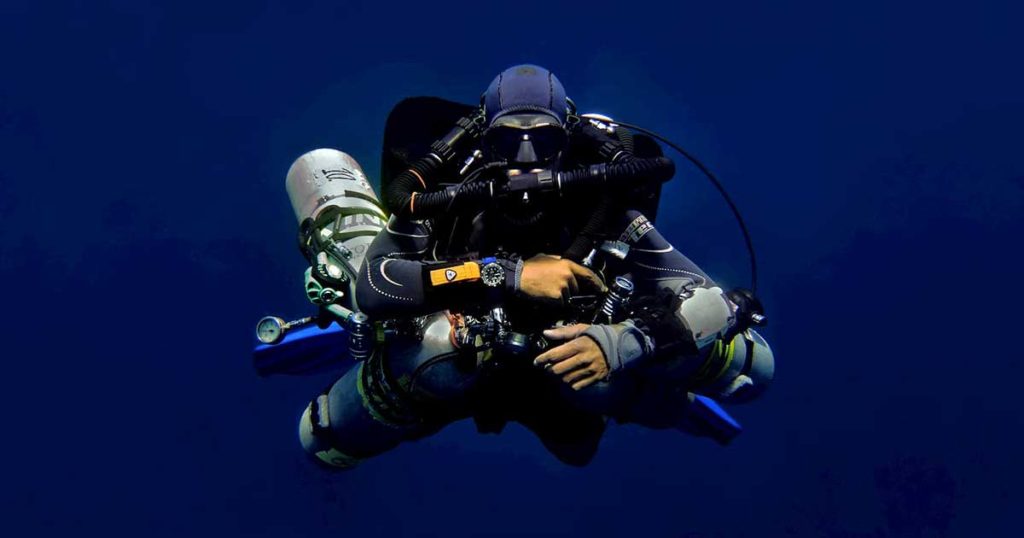Blue Grotto is among the most popular diver training sites in the USA. Each year, hundreds of students earn their Open Water Diver certification here. However, recreational diver training is not the only thing happening at Blue Grotto. The Grotto is an almost equally popular spot for technical diver training.
It’s common to see tech diving students in doubles, sidemount and rebreathers, along with O/C bailout, stage and deco cylinders. New divers often ask us what this equipment is and why some divers use it. In this article, we will unravel this and other mysteries of technical diving.
Tech diving defined
There are many definitions for what constitutes a technical dive. Among the best is:
“Technical diving is any non-commercial, non-military diving in which users exceed widely accepted recreation diving limits.”
These include:
- Dives deeper than 40 m/130 ft.
- Any dive requiring stage decompression.
- Any dive involving the use of multiple gas mixtures.
- Any dive that uses gas mixtures with an oxygen content greater than 40 percent.
Tech diving isn’t just a single activity. There are, in fact, several activities that require the use of technical diving equipment and procedures. The most popular of these are wreck diving and cave diving.
Technical wreck diving.
While there are many wrecks whose depths fall well with recreational diving limits, some of the very best wrecks lie at depths below 40 m/130 ft. Other wrecks may be shallower but will likely require stage decompression to get any meaningful bottom time.
Most technical wreck dives take place in the ocean; however, there are some spectacular deep wrecks in the Great Lakes. Because these are in freshwater, wooden wrecks tend not to decay as they would in salt water.
Cave Diving
Cave diving is the exploration of natural overhead environments beyond the sight of daylight. Cave diving requires highly specialized training and equipment, unlike cavern diving, which you can do using essentially the same single-tank equipment that sport divers use.
In Florida, most cave dives require stage decompression. If you think you may want to become a certified cave diver, one place to start is a two-day Cavern Diver course. We have two articles here on the website that can explain more. These are:
Technical diving equipment
There is a mistaken belief that simply using a particular equipment configuration will make you a tech diver. It won’t. Still, you can’t tech dive with standard, single-tank sport diving gear. Tech diving equipment falls into one of three categories.
- Backmounted doubles: This is the most common technical diving configuration. It is significantly more affordable than rebreathers and works equally well for cave and tech diving.
- Sidemount: This is the alternative to backmounted doubles. It is most often used by cave divers, who frequently pass through bedding planes that, while wide, may not be especially tall. Sidemount offers several advantages in terms of safety but does not work well on boats.
- Rebreathers: You can use closed-circuit rebreathers (CCRs) for both cave and wreck diving. They may be the only practical way to make dives below 60 m/200 ft or cave dives that require several hours of bottom time. The catch is that CCRs are very expensive. To learn more about CCRs, start with Wikipedia.
In addition to these three basic configurations, tech divers usually use one or more open-circuit bailout, deco or stage cylinders. Their use is covered during cave or tech diver training.
Is tech diving for you?
For most divers, the answer is No. Tech diving requires a very high level of knowledge and skill, plus a substantial investment of time and money.
However, if you want to make the commitment, ask your local dive center if they have one or more instructors they can recommend. If they can’t, you can find an extensive list of instructors on the Technical Diving International (TDI) website.


